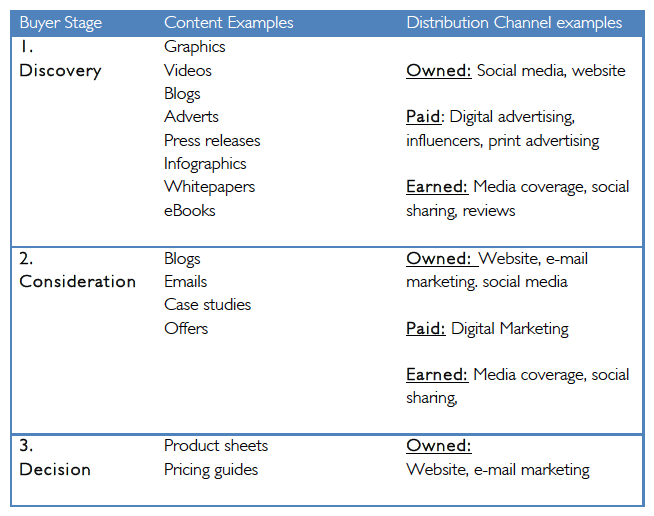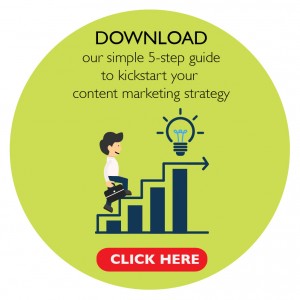Great job! You’ve created a lot of content that’s just waiting to be read. Now the next step is to identify what you want to share, how and when.
Suggested read: Content Distribution 101
Ask yourself these important questions:
- Why are you sending out content?
- How will it support business goals?
- Who are you targeting?
- What can you offer your target audience at each stage of their journey?
- How will you be different?
- How will they find the content? Where will you publish it?
- When and how will you measure results
Answer these, and then begin to work your content selection and distribution around the buyer journey.
The buyer journey
Following the buyer is key to a successful content marketing strategy. A content distribution strategy should begin with the awareness stage, followed by lead generation, then to nurturing, and finally the sales push. You will find that different content pieces will be suitable to fulfill each stage, which will ultimately determine the distribution channel/s.
Here’s a great representation of the buyers journey (and what you need to do at each stage):
During the discovery or awareness stage, you’ll likely be sharing fun and light information to capture initial interest, and hoping people download your lead generation call-to-action. Following this, you can take it up a notch and delight them with more informative content pieces, personalised emails, demos or deals. This is the nurturing stage, and when your prospect is ‘considering’ a purchase – so an important stage.
Next, if they look like a hot lead, you can give them more detailed materials about your business. This is generally done by the sales team, and includes content in the form of product sheets and pricing guides. By this stage, this prospect should be on their way to becoming a paying customer.
Distributing your words
Now let’s look at the how you will get your content seen.
Each stage will require unique content as you are targeting the buyer at different stages in their decision process. The key is to target the buyer’s emotions and help them identify their need for your product or service nice and early.
This table provides examples of the type of content and channels suited to each stage in a buyer’s journey.
You will need to remember that your industry, product and sales lifecycle will all determine the length of your campaign and the type of content you produce. Only you know your target audience and how they respond to different information, so each content distribution plan should be unique and tailored to your business – not a carbon copy of any other business.
From planning to performance
Any strategy needs to be measured to assess its effectiveness. Without proper measurement, you will have no idea if your content is working.
Run your campaign and at its conclusion look at each stage of the buyer journey separately.
Here’s an example of a typical campaign measurement system:
Step 1: 20-30 days after end of campaign
- How much traffic was generated to your website?
- How did your social channels perform (likes, shares clicks etc..)?
- Any initial leads?
Step 2 – 45-60 days after end of campaign
- How many qualified leads have you got?
Step 3 – 90-120 days
- How many leads have you converted to sales?
Of course, not each campaign has the same sales cycle length, so as I previously mentioned, this should be unique to your business. Through this you can see how each buyer stage performed, and where any content adjustments need to be made for your next campaign.
Need help with your content? Drop a message to [email protected]



